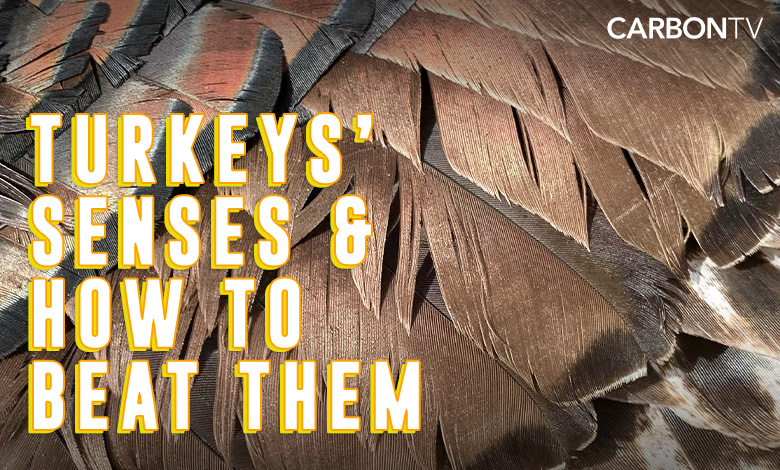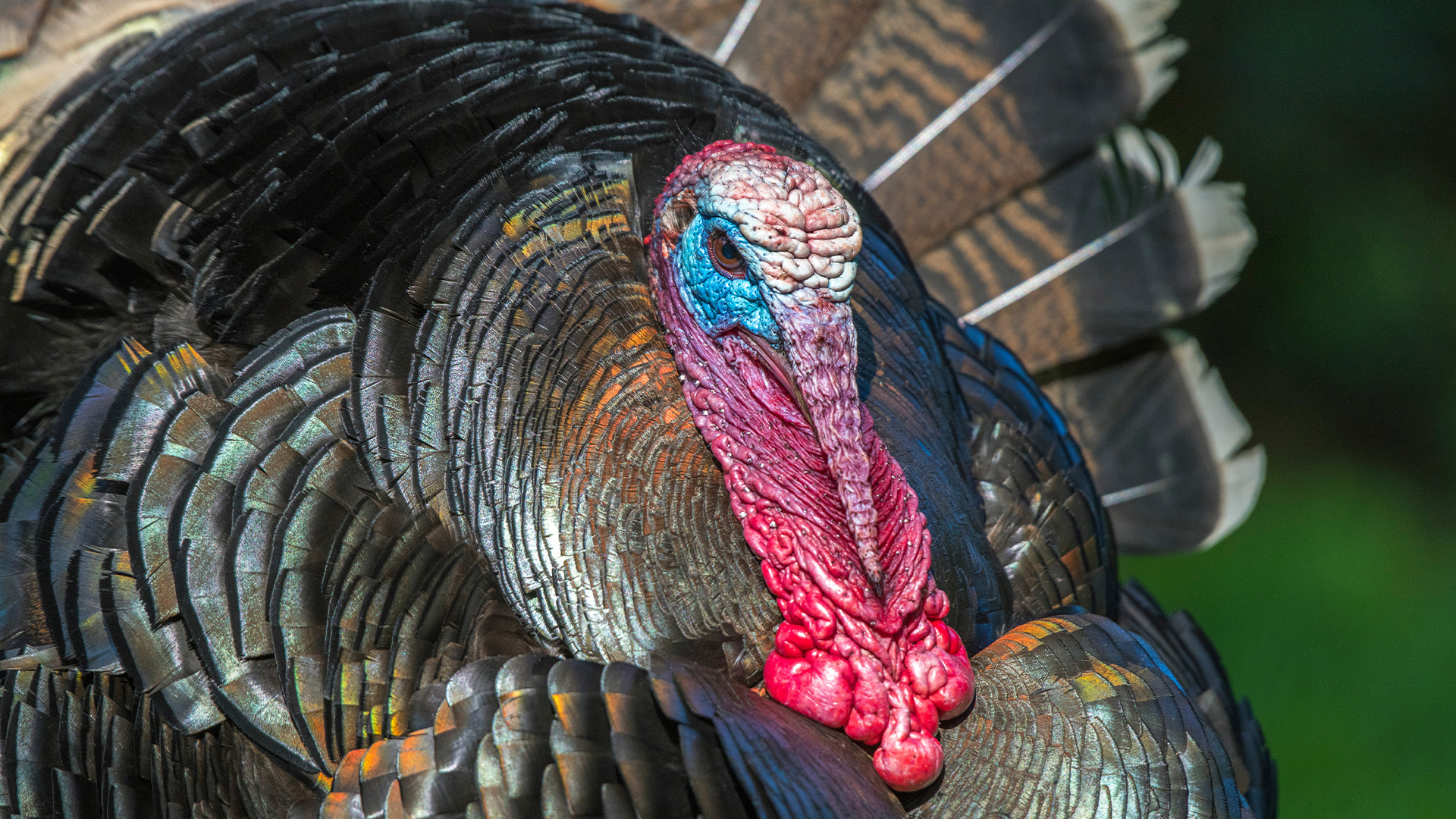
Increasing your knowledge about the wild game you pursue helps to put the odds in your favor. Here are some facts about turkeys’ senses and how to beat them.
Turkeys’ Sense of Visual Perception: Best
Turkeys’ eyesight is quite remarkable and plays a crucial role in their survival. They have large, rounded eyes on the sides of their head, providing a wide field of vision. This allows them to have a 270-degree field of view, which is imperative for detecting predators.
Their eyes have a high-density retina containing many light-sensitive cells called rods and cones. These cells allow turkeys to see well in low light conditions, essential for their early morning and evening activities.
In addition, turkeys have excellent color vision and can see a wide range of colors, including ultraviolet light. This is useful for distinguishing between different vegetation types and identifying ripe fruits and berries.
Turkeys have highly adapted eyesight and a finely tuned system that allows them to navigate their environment and avoid danger. It is crucial to remain still or move slowly if you must, and wear camouflage if you’re not hunting from a blind.
Turkeys’ Sense of Hearing: Great
Turkeys have a highly developed sense of hearing that plays a critical role in survival. They have a keen sense of hearing, which allows them to detect the slightest sounds in their environment, such as the rustling of leaves or the snap of a twig.
They have two ear openings located on the sides of their heads, covered by feathers. Unlike human ears, turkey ears lack an external flap, which makes it difficult to see their ear canal.
Turkeys can hear sounds in a wide range of frequencies and have particularly good hearing in the low-frequency range. This is important for detecting the sounds of potential predators, such as foxes or coyotes, which often make low-frequency sounds.
In addition, turkeys have an excellent directional hearing. They can rotate their heads to locate the direction of a sound. Their ear openings are positioned at different heights on each side of their head, allowing them to pinpoint the source of a sound more accurately.
Turkeys have a finely tuned sense of hearing that helps them navigate their environment, communicate with each other, and detect potential threats. Unless you are calling, trying to remain as still as possible is vital. Any noise you make will only help a turkey pinpoint your location and give them a reason to run.
Turkeys’ Sense of Smell: Worst
Turkeys’ sense of smell is not as well-developed as their eyesight, but they have a decent sense of smell. Their sense of smell is located in their nostrils, which are located at the top of their beaks.
Turkeys use their sense of smell to detect food, as well as to locate potential predators. They can smell fruits, nuts, insects, and other food items from a distance, which helps them find food sources in their environment.
However, turkeys do not rely heavily on their sense of smell to detect predators. Instead, they rely on their excellent eyesight and ability to hear low-frequency sounds. In fact, turkeys have been known to ignore the scent of humans or other potential predators if they are not moving or making noise.
While turkeys have a sense of smell, it is less important to them than their eyesight and hearing. Scent control can be an effective tool when hunting Big Game, but it is not as critical during Turkey Season.
To see how other hunters beat turkeys’ senses, check out this episode of Full Strut on CarbonTV.
Spring Turkey Season is about to begin. You may also be interested in our article: Where to Aim on a Turkey.


